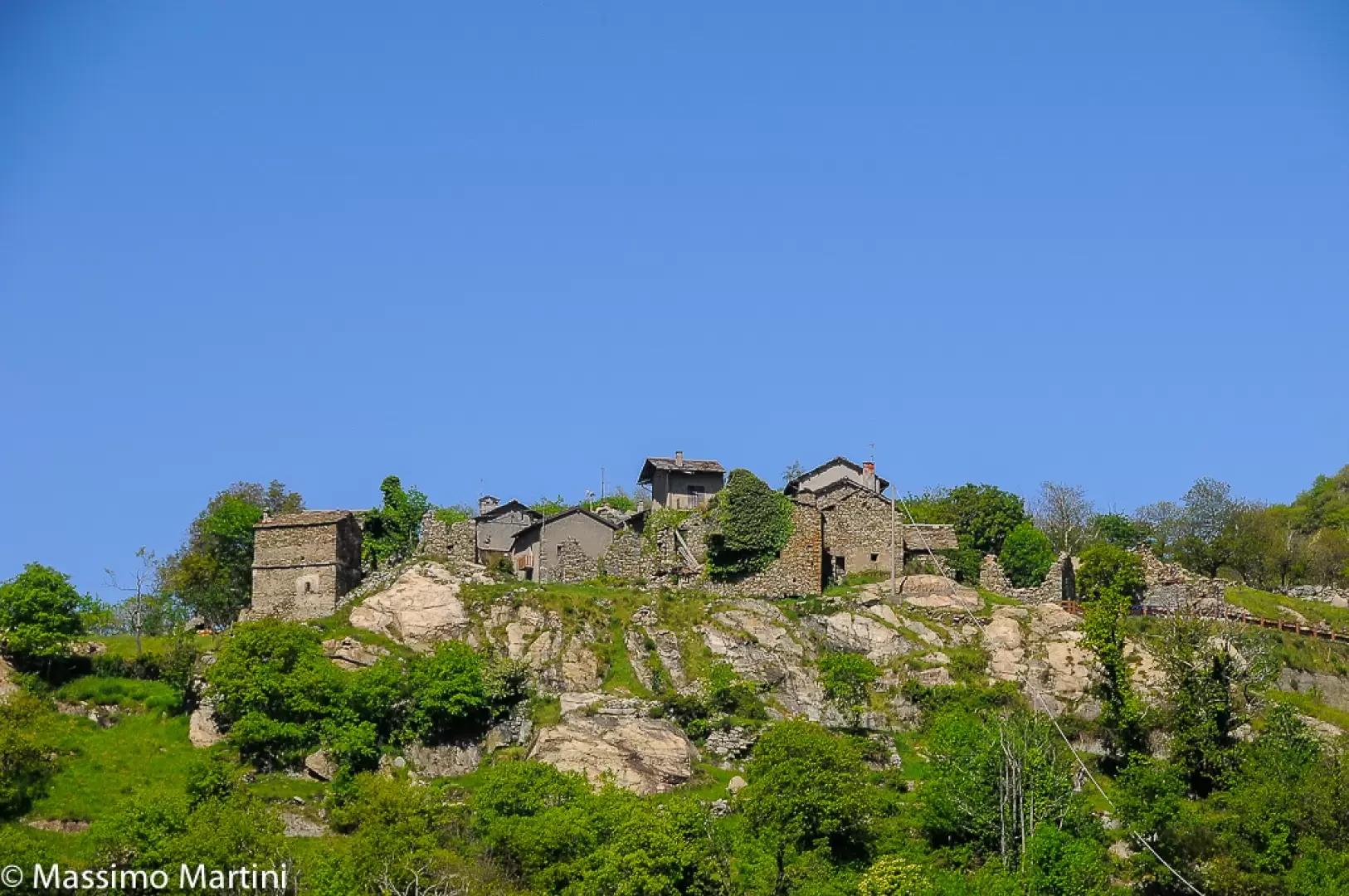Albard of Bard

Access
The village of Albard di Bard can be reached via the municipal road that climbs directly from the centre of Bard. Vehicular access is on a secondary carriageway that branches off from the main State road ; the route, although short, goes through woods and hairpin bends and may be subject to limitations in the event of intense weather or the presence of ice in the winter season. The connection with the main public services is provided at Bard below, from where it is possible to continue on foot or by car. The nearest railway station is in Pont-Saint-Martin, while the Aosta-Ivrea bus line stop is located in the centre of Bard. There are no direct public transport routes to the village, which is therefore best accessed by private transport or on foot, also to ensure the preservation of the local environment.
Introduction
Albard di Bard is one of the small alpine villages dotting the south-eastern slope of the lower Aosta Valley, located in the commune of Bard and dominating the entrance to the valley towards Piedmont. Set at an altitude of 642 metres on a natural terrace at the foot of the foothills, the nucleus of Albard is distinguished by a strategic position that once favoured the control of historical routes and, even today, offers singular panoramic views of the gorges below and the famous Bard fortress. In the local dialect it is known as Albard de Bard, underlining both its linguistic identity and its belonging to a community that has maintained its cohesion and recognisability within the Aosta Valley area over the centuries.
Description
The village has a compact structure, with stone houses leaning against each other, internal courtyards and narrow paved streets that preserve the traditional layout. The surrounding environment, dominated by mixed forests and terraced slopes, bears witness to a long coexistence between agricultural activities and adaptation to the mountainous terrain: terraced vineyards and the remains of wooden rascards speak of subsistence farming and a building know-how that is now rare. The history of Albard is closely linked to that of Bard and its defences, so much so that even in medieval times the place played a complementary role in controlling the valley floor and the roads crossed by pilgrims, merchants and wayfarers heading towards the Po Valley. The current architectural layout of the village still recalls the ancient need for defence, recounting, even in the stones of the houses, the need to resist the natural and human threats typical of Alpine border territories.
The economic activity of Albard was based on family farming - with the cultivation of cereals, vines and orchards -, small animal husbandry and forestry: trades that over the centuries have shaped the landscape. Even today, despite depopulation phenomena, the village remains populated and preserves some examples of traditional rural architecture. Local culture is expressed in the preservation of simple festivals, devotional memories and wood crafts, which are also well represented by the existing building heritage. Its location off today's main traffic arteries protects Albard from mass tourism and accentuates its authentic and silent dimension, offering visitors the chance to immerse themselves in the cosy atmosphere typical of small mountain settlements.
In terms of tourism, the village is the starting point for short, evocative walks along ancient paved paths that connect the different hamlets of the municipality or ascend towards the woods above, allowing easy nature explorations and pleasant panoramic stops. The hiking interest is combined with the possibility of observing floristic species typical of the warmer slopes of the lower valley and a widespread presence of minor fauna. The ideal connection with Bard and its fort multiplies the opportunities for thematic visits, including Albard as a stop on the itinerary to discover the historical villages of the valley.
Information
General Information
- Altitude: 642m
- Population: yes
- Name in dialect: Albard de Bard
- Inhabitants:
- Patron Saint: